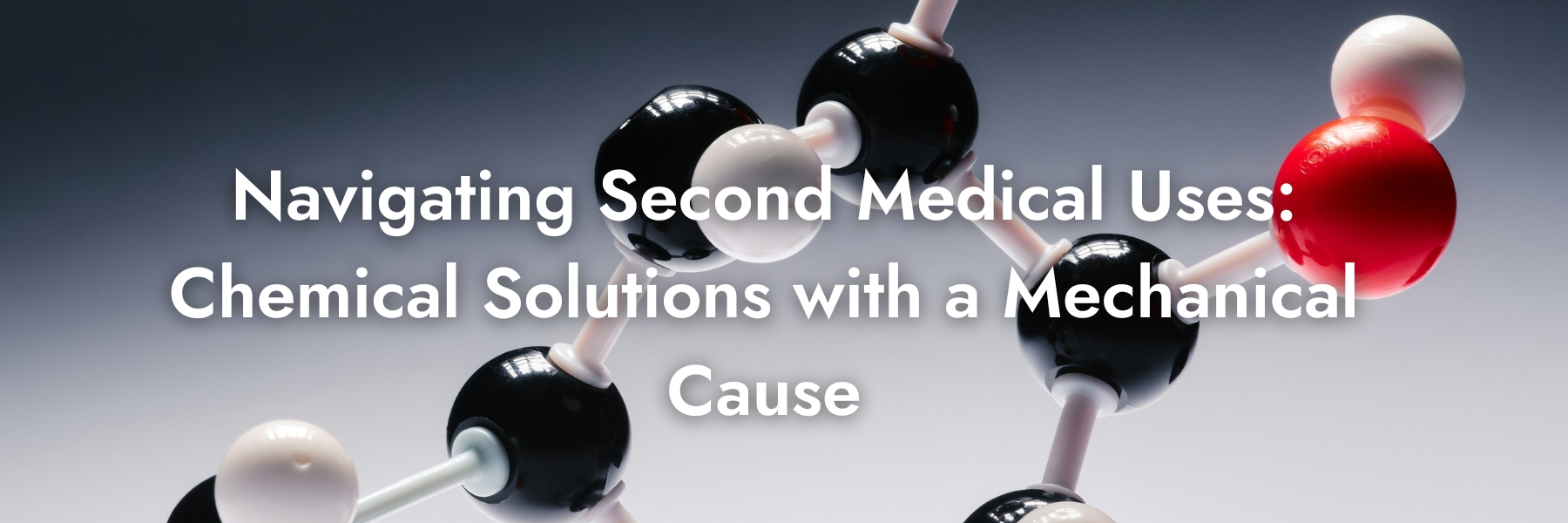Navigating Second Medical Uses: Chemical Solutions with a Mechanical Cause
The European Patent Office issued a decision which could allow a broader range of claimed innovations to benefit from the so-called “second medical use” exception of Article 54(5) of the European Patent Convention (EPC).
Such an exception is limited to a “substance or composition” only and is thus not available for medical devices. Historically, compounds that provide a therapeutic effect by way of a 3D macrostructure have been considered medical devices due to their mechanical, rather than chemical, cause of action, thereby not benefiting from the exception.
The application at issue describes the use of amphiphilic peptides, which are introduced into blood vessels via a catheter in aqueous solution form. Upon contact with body fluid, these peptides aggregate to form a hydrogel, effectively blocking the blood vessel and inducing tissue necrosis. This process, known as embolization, can be employed to treat various pathological conditions, including cancer, patent ductus arteriosus (PDA), and major aortopulmonary collateral artery (MAPCA).
The Examining Division previously refused the application, citing a lack of novelty over the prior art. They argued that the peptide solutions did not qualify as a “substance or composition” under Article 54(5) EPC, their mode of action being purely mechanical.
The Board of Appeal rejected this view, emphasizing that the claimed material is a liquid solution of peptides and does not possess device-like mechanical features at the time of administration. The transformation of the solution into a 3D hydrogel structure inside the body, which then acts mechanically to block blood vessels, does not alter its qualification as a substance, irrespective of the fact that the active principle is not a chemical mode of interaction.
The Board noted that neither the EPC nor prior legal interpretations mandate that a material’s qualification be based on its mode of action and instead maintained that the definition should focus on the nature of the material itself. The Board further noted that the mechanism of action may not be understood in detail, or original assumptions about the mechanism of action may later turn out to be wrong and that not even for the purpose of sufficient disclosure under Article 83 EPC is it required that the mechanism underlying a therapeutic use be disclosed or understood.
As such, if this decision is followed in future cases, there may be a benefit to fully describing the state of compounds (such as self-assembling bio polymers) at the time of introduction to the body prior to any changes leading to a mechanical therapeutic effect.
Please do not hesitate to reach out with any questions in this matter and other Biotechnology related matters to:
Caleb Gilliam-Scott, European Patent Attorney, UK Patent Practice Group, Pearl Cohen: CGilliam-Scott@pearlcohen.com
Hili Rashkovan, Partner, Chair of IL Technology Transactions Practice Group, Pearl Cohen: HiliR@PearlCohen.com
Hadar Solomon, Partner, Head of China Desk, Pearl Cohen: HSolomon@PearlCohen.com


Subscribe Now to the Bio-Startup Standard
Notify me for the next issue!



